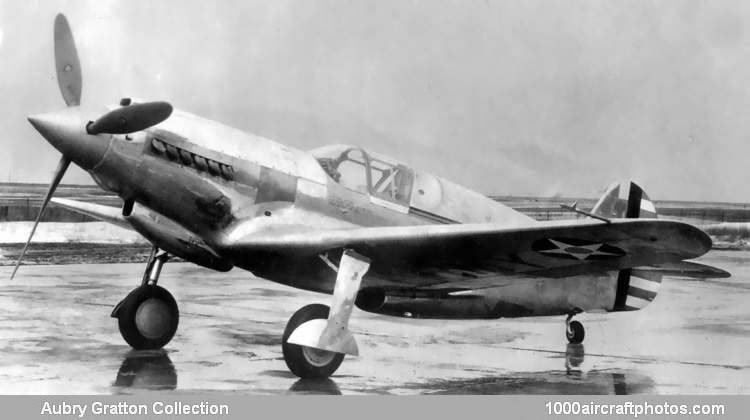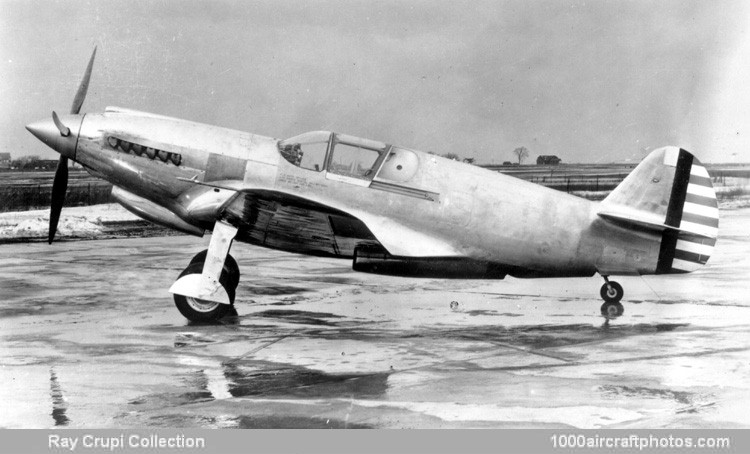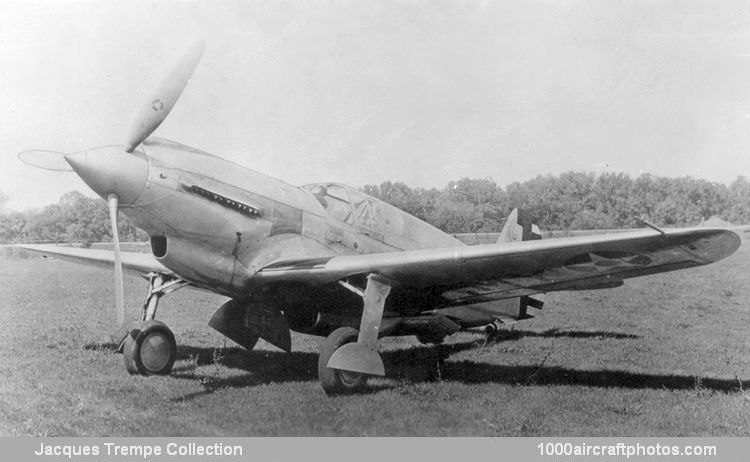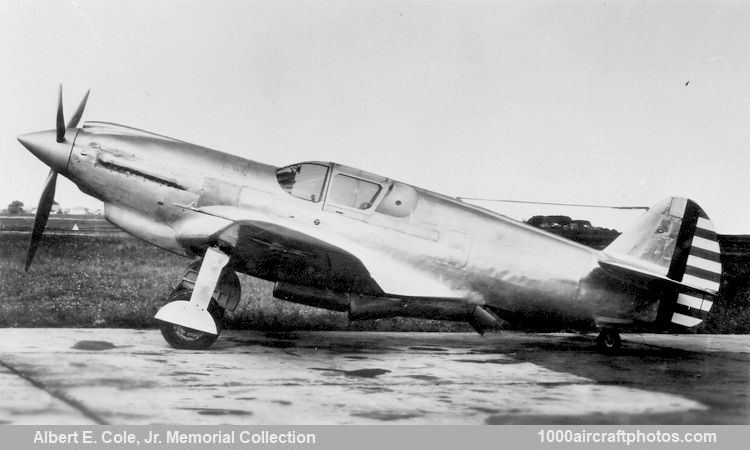05/31/2010. Remarks by
Johan Visschedijk: "During the summer of 1939 the Army Air Corps assessed the latest developments in a Europe about to be propelled into war. A number of American designers had gone to England and Germany and examined firsthand the concepts being developed in those countries. One of the companies which benefited from this examination was Curtiss, which culled the ideas, rejected some, refined others and finally presented the Army with a proposal for a new fighter drawn by Donovan R. Berlin. The Air Corps drew a specification around this proposal and thus as a potential successor for the
P-40, the XP-46 was born and an order for two prototypes (s/n 40-3053 and 40-3054) being placed with Curtiss on September 29, 1939.
(40-3054) (
Ray Crupi Collection)
Designed around the newly-developed Allison V-1710-39 (F3R) rated at 1,150 hp, the XP-46 was more compact that the earlier fighter. It featured automatic wing leading edge slats, fully retractable landing gear which rotated inward, an armament of twin fuselage-mounted 0.5 in (12.7 mm) guns and eight wing-mounted 0.3 in (7.62 mm) guns. The coolant radiator was moved aft to allow for improved stream-lining of the nose. The original specification called for a maximum speed of 410 mph (660 kmh) at 15,000 ft (4,572 m). Projected empty weight was 5,471 lb (2,482 kg) and 6,849 lb (3,107 kg) loaded.
(40-3054) (
Jacques Trempe Collection)
The second prototype, which was the first to fly (as the XP-46A) on February 15, 1941, was delivered without pilot armor (65 lb, 29.5 kg), armament, radio and self-sealing fuel tanks. In this stripped form it met the specification speed of 410 mph (660 kmh), but when the fully-equipped first prototype was delivered on September 22, 1941, maximum speed was found to be 55 mph (88,5 kmh) down. Lacking supercharging, the XP-46 held no promise as a fighter at altitude, and as a similarly-powered development of the P-40 had meanwhile been programmed (ie, P-40D), further development of the experimental fighter was abandoned."



